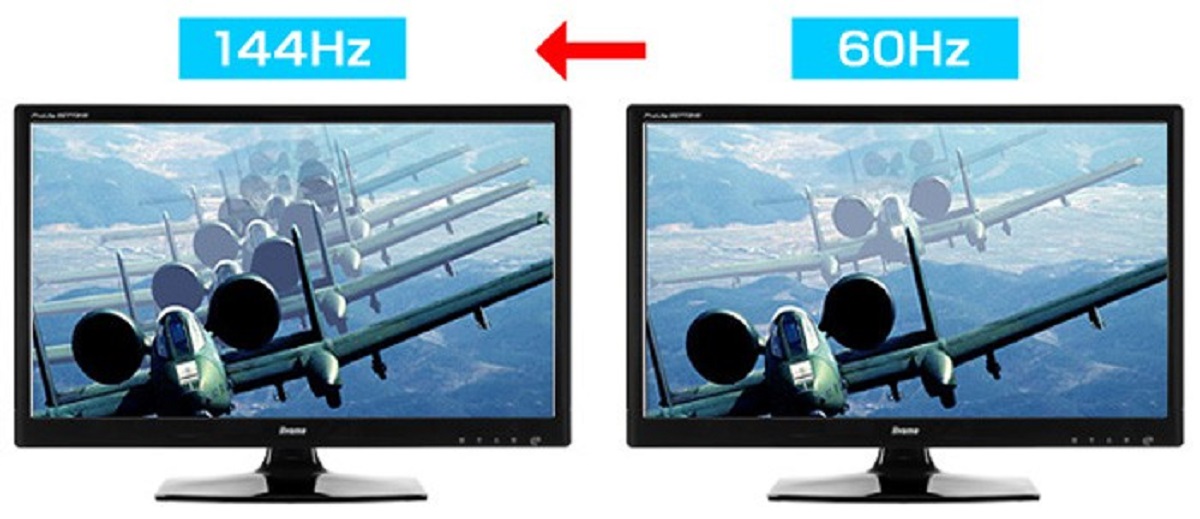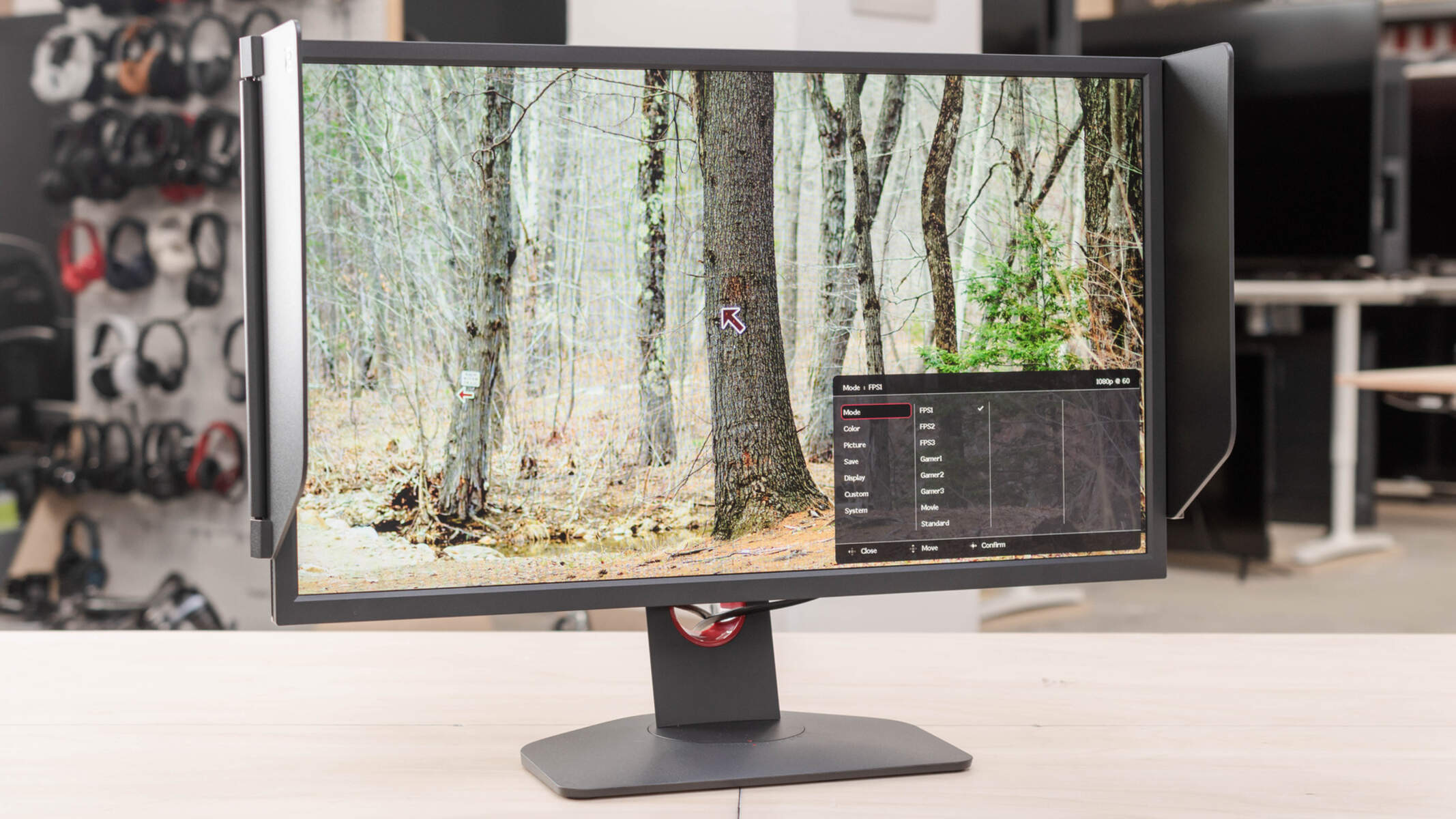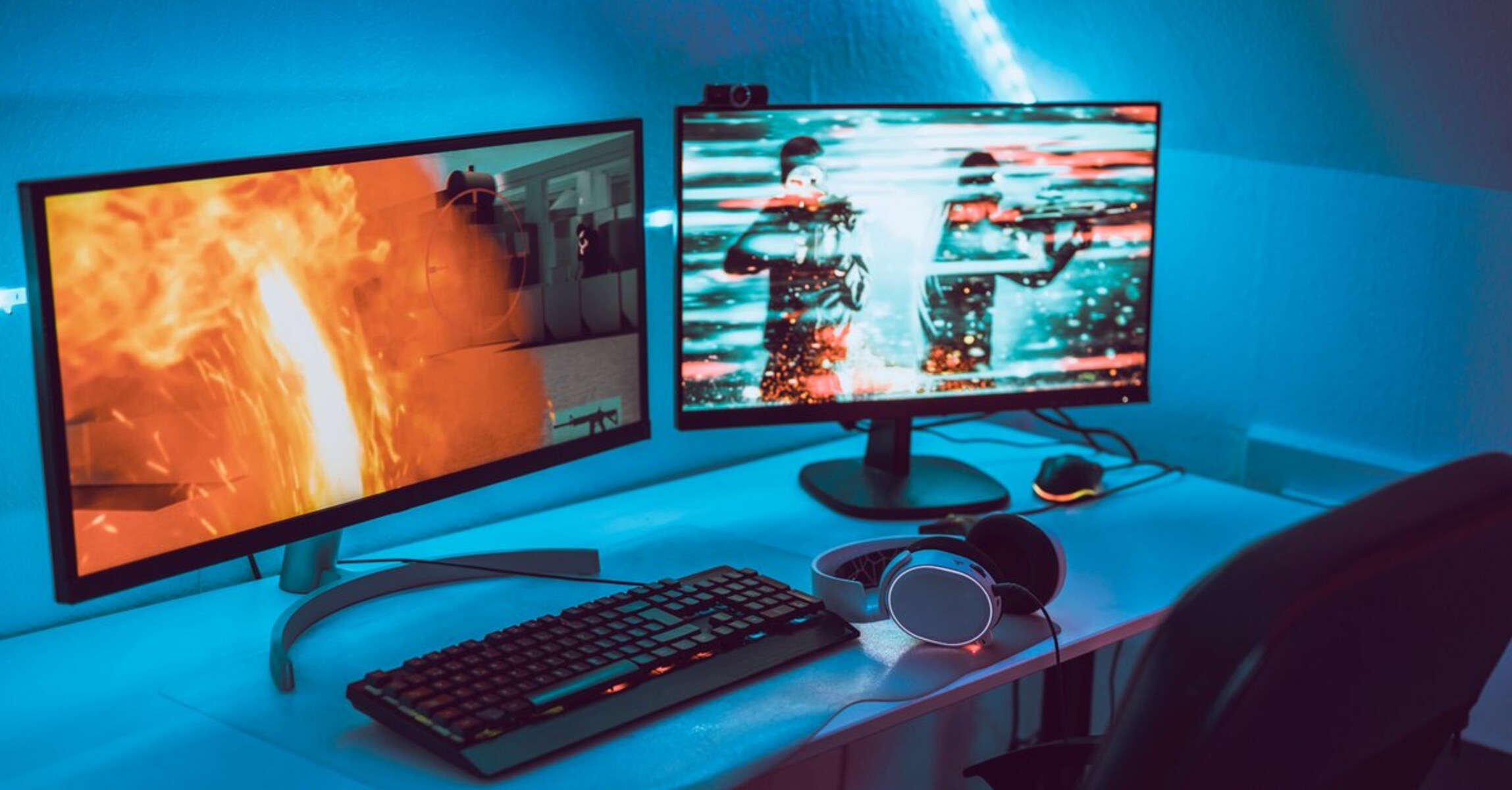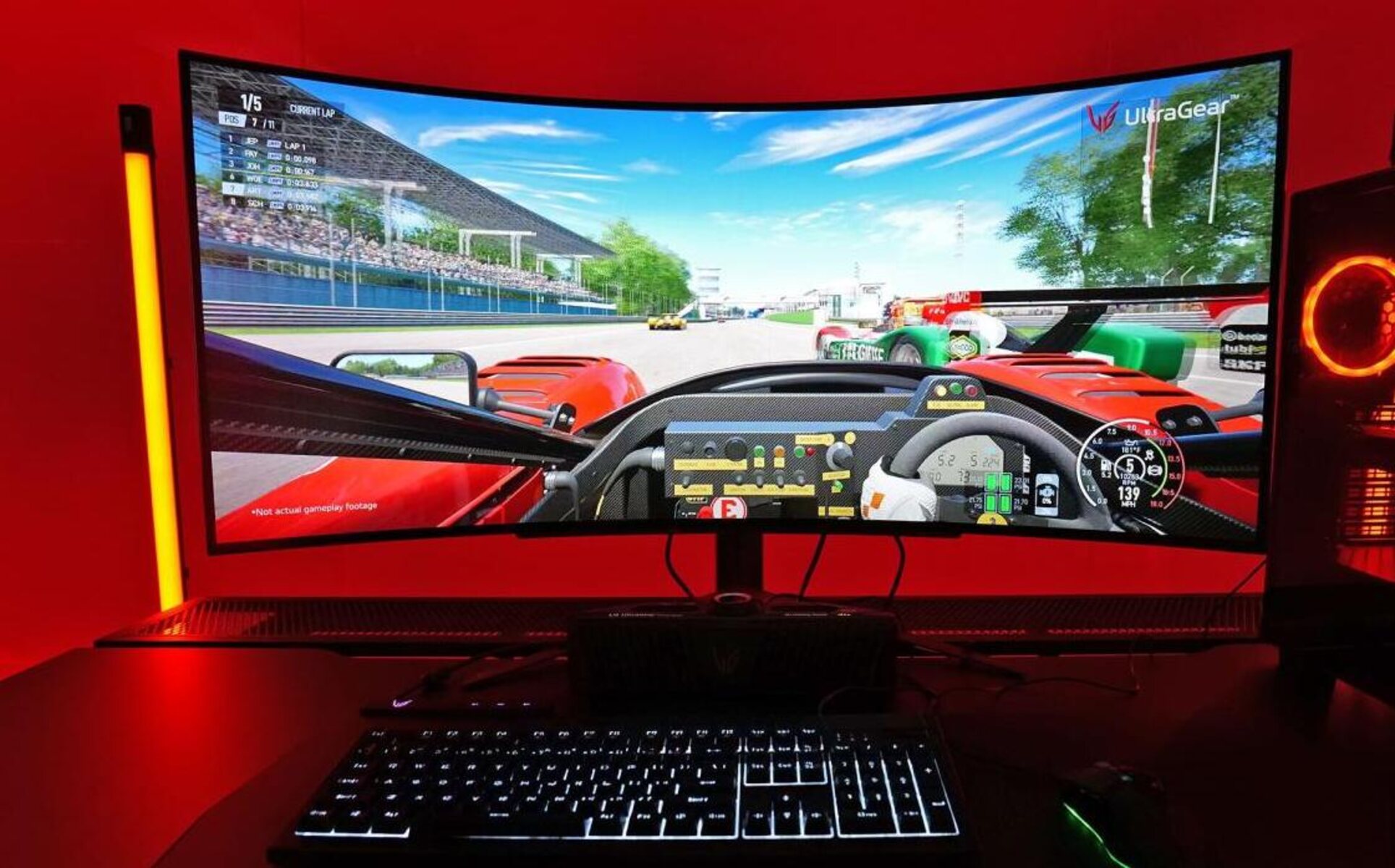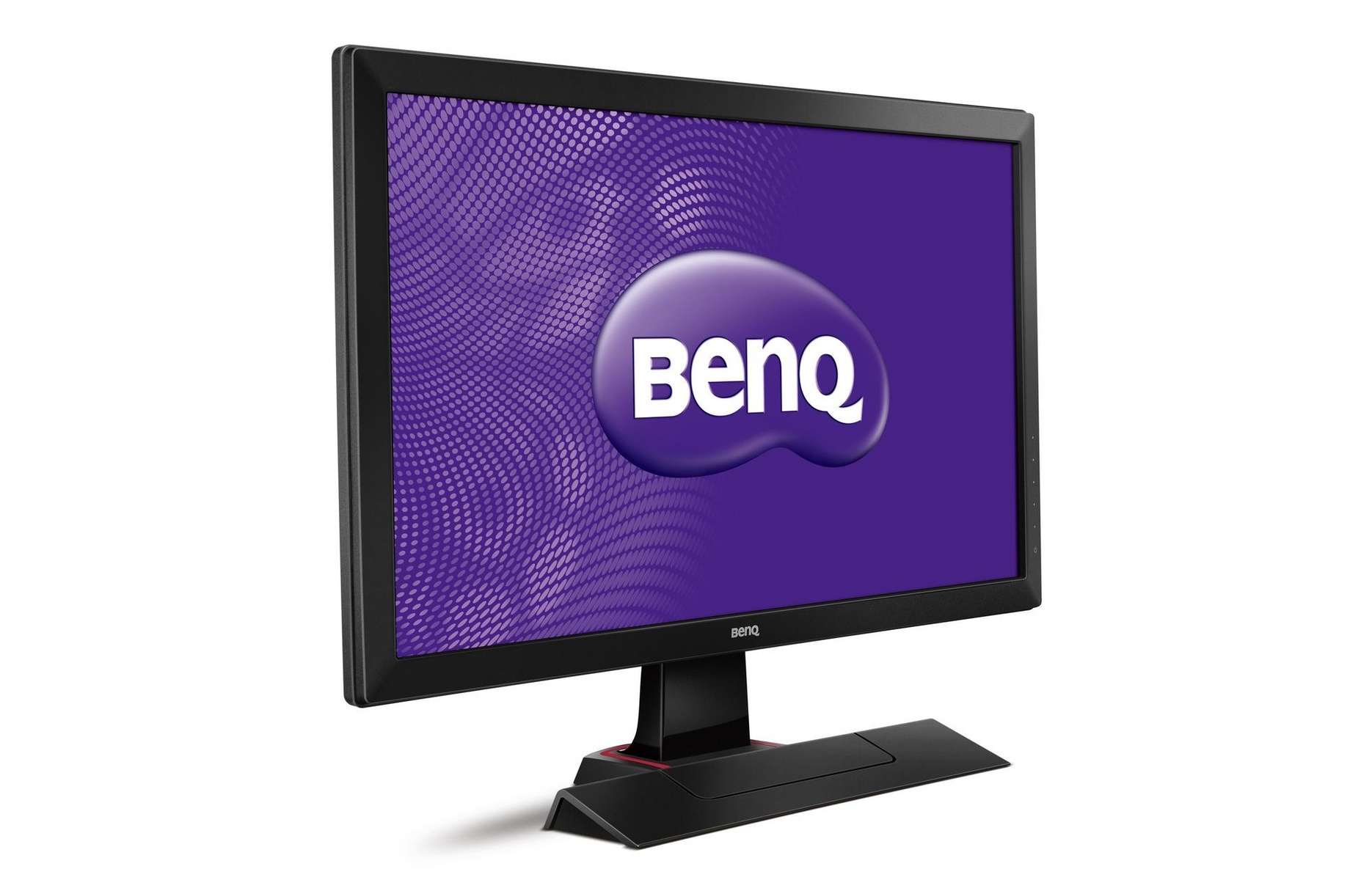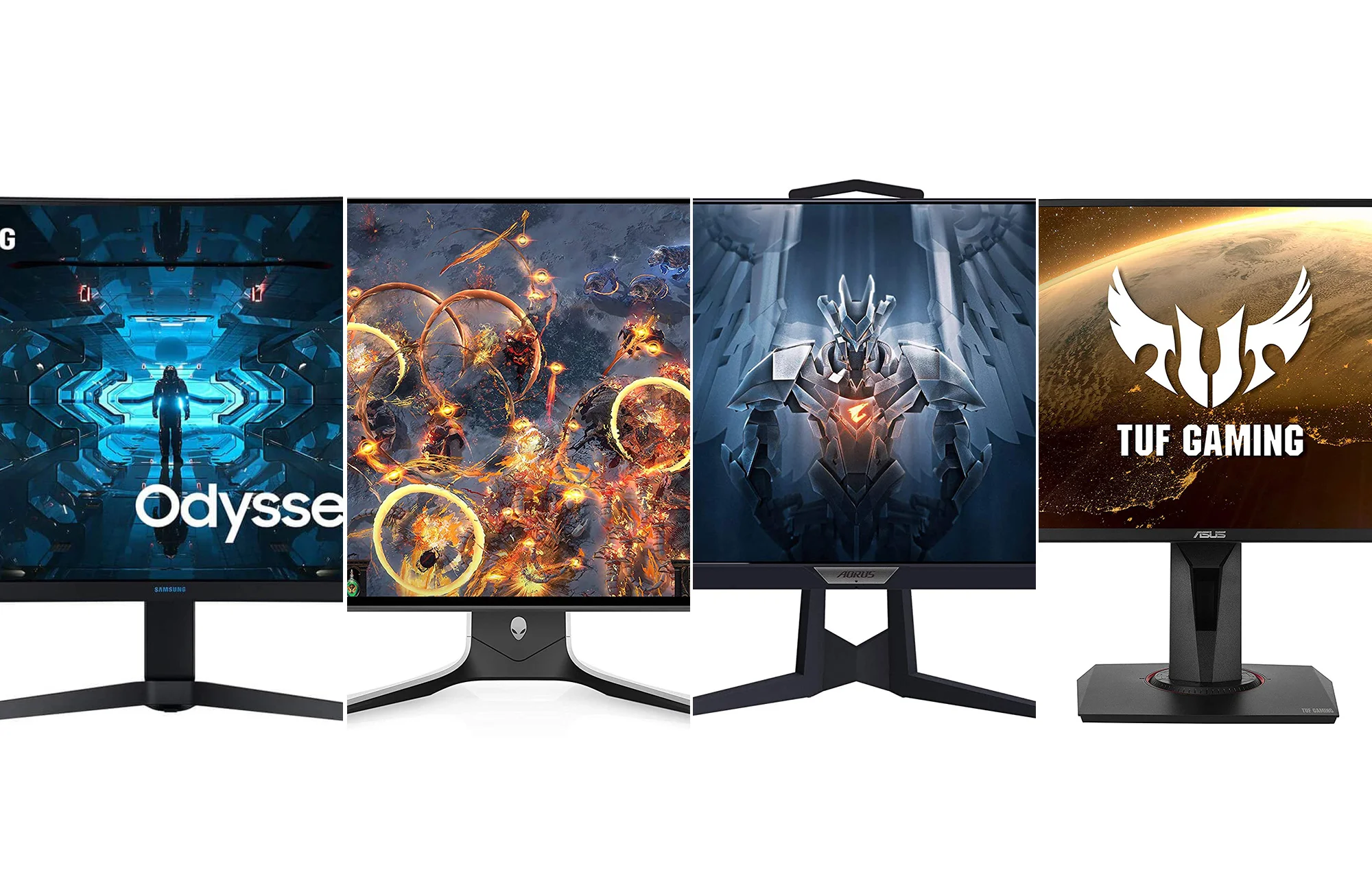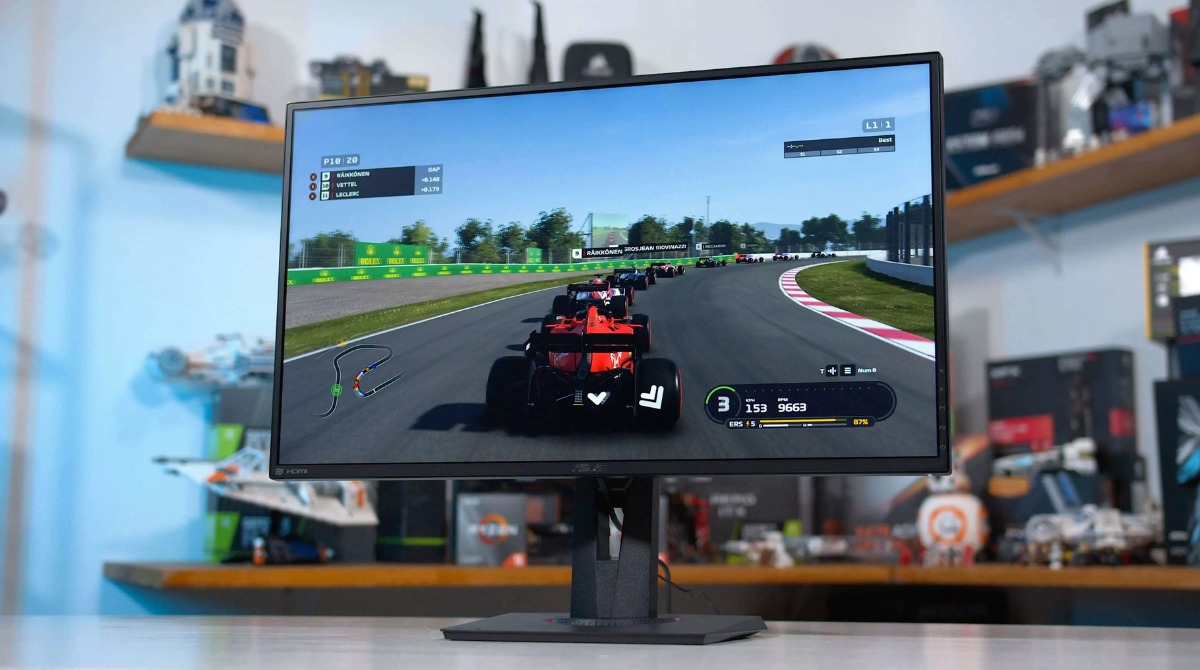Introduction
Welcome to the world of monitors, where every frame counts. If you’ve ever wondered what that ‘refresh rate’ specification on your monitor means, you’re in the right place. In today’s rapidly advancing technology landscape, refresh rate has become an important factor to consider when purchasing a new monitor. It plays a significant role in determining the overall visual experience and smoothness of the displayed content.
The refresh rate refers to the number of times a display can update its content per second. It is measured in Hertz (Hz), indicating the frequency at which the monitor refreshes the images on the screen. A higher refresh rate means that the monitor can update the displayed content more frequently, resulting in smoother motion during fast-paced activities, such as gaming or watching high-definition videos.
While most standard monitors have a refresh rate of 60Hz, there is a growing demand for higher refresh rates, with some displays reaching up to 240Hz. The choice of refresh rate depends on personal preferences and the intended use of the monitor. For casual computer users or those engaged in basic office tasks, a 60Hz refresh rate is usually sufficient. However, for gamers and professionals working with high-performance applications, a higher refresh rate can make a noticeable difference in the overall viewing experience.
Adjusting the refresh rate is a relatively simple task. Most modern monitors offer options to change the refresh rate in their settings menu. However, it’s important to note that not all monitors support higher refresh rates. Older or budget-friendly models may have limited options, so it’s essential to check the specifications before making any changes.
Before changing the refresh rate, several factors should be considered. The capabilities of the graphics card, the monitor’s native refresh rate, and the connection interface (such as HDMI or DisplayPort) all play a role in determining the optimal refresh rate for your system.
This article will guide you through the world of refresh rates, helping you understand why they matter and the different options available. We’ll explore the benefits and drawbacks of higher refresh rates and provide insights to help you find the right refresh rate for your needs. So, grab your virtual seatbelt and get ready for a smoother ride through the fascinating realm of refresh rates.
Understanding Refresh Rate
Refresh rate, in the context of monitors, refers to the frequency at which the display updates the images on the screen. It determines how many times per second the monitor can refresh the content, measured in Hertz (Hz).
Imagine a movie being played at a cinema. Each frame of the movie is shown for a fraction of a second before quickly transitioning to the next frame. Similarly, a monitor displays a series of images or frames to create the illusion of motion. The refresh rate dictates how quickly these frames are shown, thus impacting the smoothness and fluidity of the visual experience.
A refresh rate of 60Hz means that the monitor is capable of refreshing the display 60 times per second. This results in a smooth viewing experience for most everyday tasks, such as browsing the web or working on documents. However, when it comes to activities that involve rapid movements, such as gaming or watching action-packed movies, a higher refresh rate can significantly enhance the visuals.
Higher refresh rates, such as 120Hz, 144Hz, or even up to 240Hz, provide more frequent frame updates. This means that the content displayed on the screen is refreshed at a faster rate, resulting in smoother motion and reduced motion blur. The increased refresh rate ensures that the monitor stays in sync with fast-moving visuals, delivering a more immersive and responsive experience.
It’s important to note that the benefits of higher refresh rates are most noticeable when paired with graphics-intensive applications that can output content at a corresponding high frame rate. For example, playing a game at 144 frames per second (fps) on a 144Hz monitor allows for a seamless experience, with each frame being shown exactly when it’s rendered by the graphics card.
On the other hand, if the content being displayed has a low frame rate, such as 30fps, the benefits of a higher refresh rate may not be as apparent. In such cases, the monitor will have to repeat frames as needed to match its refresh rate, which can result in a less smooth visual experience.
Understanding refresh rate is crucial for individuals who prioritize fluid visuals and smooth motion in their daily activities. By considering the refresh rate when choosing a monitor, users can ensure that their display is capable of keeping up with their specific needs and preferences.
Why Refresh Rate Matters
The refresh rate of a monitor is more than just a technical specification; it directly impacts the overall visual experience and user satisfaction. Here are some key reasons why refresh rate matters:
- Smoothness of Motion: A higher refresh rate ensures smoother motion on the screen, especially during fast-paced activities like gaming or watching action movies. The increased frame updates result in reduced motion blur and a more fluid viewing experience.
- Reduced Eye Strain: Monitors with higher refresh rates can decrease eye strain. When the refresh rate is too low, the screen may appear to flicker, which can cause discomfort and eye fatigue. By increasing the refresh rate, the monitor provides a more stable and comfortable viewing experience for extended periods.
- Improved Responsiveness: Higher refresh rates can improve the overall responsiveness of the monitor. This is particularly noticeable in gaming, where a higher refresh rate helps reduce input lag and provides a more immediate response to the player’s actions. It allows for quicker reaction times and enhances the overall gaming experience.
- Enhanced Immersion: A higher refresh rate contributes to a more immersive experience, as it creates a smoother and more realistic portrayal of fast-moving visuals. Whether you’re exploring a virtual world, watching a thrilling movie, or editing high-definition videos, a higher refresh rate enhances the level of immersion and engagement.
- Future-Proofing: With the increasing popularity of high refresh rate content, investing in a monitor with a higher refresh rate ensures compatibility with future advancements. As more games and media content are designed with higher frame rates in mind, having a monitor that can keep up with these demands ensures a better experience for years to come.
While the benefits of higher refresh rates are undeniable, it’s important to note that some users may not require the highest available refresh rates. If your computer activities primarily involve productivity tasks, web browsing, or content consumption at lower frame rates, a monitor with a standard 60Hz refresh rate may be sufficient for your needs.
However, for gamers, content creators, and those who value a smooth and responsive visual experience, a higher refresh rate can make a substantial difference. It allows for a more enjoyable and immersive experience, ultimately enhancing the overall satisfaction with your monitor.
Different Refresh Rate Options
When it comes to refresh rates, monitors offer a range of options to suit different needs and preferences. Here are some common refresh rate options and their characteristics:
- 60Hz: A refresh rate of 60Hz is the standard for most monitors. It provides a smooth experience for everyday tasks, such as browsing the web and working on documents. While it may handle basic gaming and video playback, it may fall short in delivering the smoothness desired by more demanding users.
- 75Hz – 144Hz: Monitors with refresh rates between 75Hz and 144Hz offer a noticeable improvement in motion fluidity over the standard 60Hz. They are particularly popular among gamers, as they allow for more responsive and immersive gaming experiences. These refresh rates excel at reducing motion blur and delivering smoother visuals during fast-paced gameplay.
- 165Hz – 240Hz: Monitors with refresh rates in this range go beyond what most users require, but they are highly sought after by competitive gamers. With refresh rates above 144Hz, these monitors can provide an even smoother and more responsive experience, especially for fast-action games. The difference between 165Hz and 240Hz becomes less discernible for most users, but gaming enthusiasts who value every fraction of a second may opt for the highest refresh rates available.
Keep in mind that the benefits of higher refresh rates are most noticeable when paired with content that can provide frames at the corresponding frame rate. For example, gaming at high frame rates or watching high frame rate media can fully capitalize on the advantages of higher refresh rates.
It is important to note that not all monitors can accommodate higher refresh rates. While most modern monitors allow for at least a 75Hz refresh rate, older models or budget-friendly options may be limited to 60Hz. Additionally, the graphics card and connectivity options of your system should support the desired refresh rate to ensure optimal performance.
Ultimately, the choice of refresh rate depends on your specific requirements and budget. If you primarily use your computer for basic tasks, a 60Hz monitor should suffice. However, for gamers and multimedia enthusiasts who value smoother motion and responsiveness, opting for a higher refresh rate monitor can significantly enhance their overall experience.
How to Adjust the Refresh Rate
Adjusting the refresh rate on your monitor is a straightforward process that can be done within the settings of your computer’s operating system or graphics card control panel. Here’s how you can adjust the refresh rate:
- Firstly, right-click on your desktop and select “Display settings” or “Graphics properties.”
- In the display settings, navigate to the section where you can adjust the monitor properties.
- Look for the “Refresh rate” option. Depending on your system, it may be listed as “Screen refresh rate” or “Monitor refresh rate.”
- Select the desired refresh rate from the available options. If your monitor supports higher refresh rates, they should be visible here.
- Click “Apply” or “OK” to save the changes. Your display may flicker briefly as the new refresh rate is applied.
- After applying the new refresh rate, your monitor should now display content at the selected rate.
It’s important to note that not all monitors support higher refresh rates. If you don’t see a range of refresh rate options in the display settings, it may indicate that your monitor is limited to a specific refresh rate, typically 60Hz.
Additionally, your graphics card must support the desired refresh rate. Older or lower-end graphics cards may have limitations when it comes to higher refresh rates. In such cases, you may need to upgrade your graphics card to take advantage of higher refresh rates.
Before adjusting the refresh rate, it’s recommended to consult the documentation provided by your monitor manufacturer and graphics card manufacturer. This will ensure that you understand the specific capabilities and limitations of your hardware.
It’s also worth noting that changing the refresh rate can affect the performance of certain applications or games. Some older software may not be optimized for higher refresh rates and may exhibit graphical issues. If you encounter any compatibility issues or experience problems with certain applications, you can easily revert to the default refresh rate through the same display settings menu.
By adjusting the refresh rate to match your specific needs and monitor capabilities, you can take full advantage of the benefits offered by higher refresh rates and enhance your overall visual experience.
Factors to Consider Before Changing the Refresh Rate
Before changing the refresh rate on your monitor, there are several important factors to consider. Taking these factors into account will help ensure optimal performance and compatibility. Here are the key factors to consider:
- Monitor Compatibility: Not all monitors support higher refresh rates. Before making any changes, check the specifications of your monitor to determine its maximum supported refresh rate. Using a refresh rate higher than the monitor’s capabilities can result in compatibility issues or even damage to the monitor.
- Graphics Card Capability: Your graphics card plays a crucial role in determining the refresh rate that your system can handle. Ensure that your graphics card supports the desired refresh rate before making any changes. Older or lower-end graphics cards may have limitations that prevent them from achieving higher refresh rates.
- Connection Interface: The connection interface between your graphics card and monitor can also impact the available refresh rate options. For example, older HDMI versions may have limitations in supporting higher refresh rates. If you plan to use a higher refresh rate, consider using a DisplayPort or HDMI 2.0 (or newer) cable, as they offer better bandwidth and support for higher refresh rates.
- Content Compatibility: Consider the type of content you typically engage with on your computer. While a higher refresh rate offers smoother motion for gaming or fast-action videos, it may not provide a noticeable benefit for everyday tasks like web browsing or document editing. Assess whether the content you consume and the applications you use can take full advantage of a higher refresh rate.
- System Performance: Increasing the refresh rate can put additional strain on your system. Higher refresh rates often require more processing power from your graphics card to render frames at a faster rate. Ensure that your system meets the recommended specifications for the desired refresh rate to ensure smooth performance without any frame drops or stuttering.
Considering these factors before changing the refresh rate will help you make an informed decision. It’s crucial to ensure compatibility between your monitor, graphics card, and content requirements to unlock the benefits of a higher refresh rate without encountering any issues.
If you are unsure about the capabilities of your monitor or graphics card, consult the manufacturer’s documentation or their official websites for detailed specifications. Additionally, seeking advice from technical experts or online forums can provide valuable insights based on real-world experiences and compatibility tests, ensuring a smooth refresh rate adjustment process.
Benefits of Higher Refresh Rates
Higher refresh rates offer several benefits that can significantly enhance the visual experience and user satisfaction. Here are some key advantages of opting for a monitor with a higher refresh rate:
- Smoother Motion: One of the primary benefits of higher refresh rates is the smoother motion it provides. With more frequent frame updates, fast-moving objects appear more fluid and natural on the screen. This is particularly beneficial for gamers and those who engage in activities involving rapid movements, such as watching action movies or sports events.
- Reduced Motion Blur: Higher refresh rates help reduce motion blur, which can occur when fast-moving objects appear blurry or unclear on the screen. With a higher refresh rate, each frame is displayed for a shorter duration, resulting in crisper and clearer visuals, especially during fast-paced action sequences in games or sports broadcasts.
- Improved Responsiveness: A higher refresh rate can improve the overall responsiveness of the monitor. This is particularly important for gamers, where even the slightest delay in displaying a frame can impact gameplay. Higher refresh rates reduce input lag, allowing for quicker response times and providing a more seamless and immersive gaming experience.
- Enhanced Visuals: Higher refresh rates contribute to a more immersive visual experience. High-action sequences in games or movies appear smoother and more realistic, allowing you to fully immerse yourself in the content. The increased smoothness and clarity provided by higher refresh rates add an extra level of detail and enhance the overall enjoyment of the visuals.
- Eye Comfort: Increasing the refresh rate can reduce eye strain and fatigue. Monitors with higher refresh rates result in less noticeable screen flickering, which can cause discomfort and eye strain, especially during prolonged use. A higher refresh rate provides a more stable, flicker-free display that is easier on the eyes, allowing for longer, more comfortable viewing sessions.
It’s important to note that the benefits of higher refresh rates are most noticeable when paired with content that can provide frames at the corresponding frame rate. For example, gaming at high frame rates or watching high frame rate media can fully capitalize on the advantages offered by higher refresh rates.
Ultimately, the benefits of higher refresh rates make them highly desirable for individuals who value smooth, immersive visuals and responsive experiences. Whether you’re a gamer seeking a competitive edge or a media enthusiast looking for an enhanced viewing experience, opting for a monitor with a higher refresh rate can significantly elevate your visual enjoyment.
Drawbacks of Higher Refresh Rates
While higher refresh rates offer numerous benefits, it’s important to consider the potential drawbacks before deciding to invest in a monitor with a higher refresh rate. Here are a few drawbacks to be aware of:
- Hardware Requirements: Achieving higher refresh rates often requires more powerful hardware. This means you may need a capable graphics card and a compatible connection interface, such as HDMI 2.0 or DisplayPort, to take full advantage of the higher refresh rates. Upgrading both your monitor and graphics card simultaneously can be a significant investment.
- Limited Content Optimization: While some newer games and media content are optimized for higher refresh rates, many older or less demanding applications may not fully utilize the increased refresh rate. In these cases, you may not notice a significant improvement in visuals or smoothness, as the content may be limited to lower frame rates.
- Compatibility Issues: Not all monitors, especially older or budget-friendly models, support higher refresh rates. If you invest in a monitor with a higher refresh rate without considering its compatibility with your existing system, you may encounter issues such as flickering, screen tearing, or even a completely black screen. Ensure that your monitor and graphics card are fully compatible before making any adjustments.
- Increased Power Consumption: Higher refresh rates can result in increased power consumption. Displaying more frames per second requires more processing power and, in turn, more electricity. If energy efficiency is a priority for you, a higher refresh rate may not be the most power-efficient option.
- Diminishing Returns: The difference between refresh rates becomes less noticeable at higher values. While there is a significant improvement going from 60Hz to, for example, 144Hz, the difference between 144Hz and 240Hz may not be as pronounced. For many users, the benefits of a higher refresh rate may start to diminish beyond a certain point.
Understanding the potential drawbacks of higher refresh rates allows you to make an informed decision that aligns with your needs and preferences. Consider both the benefits and drawbacks to determine the optimal refresh rate for your specific use cases and hardware capabilities.
Additionally, if you decide to invest in a monitor with a higher refresh rate, it’s crucial to ensure that the rest of your system, including your graphics card and software, can support and make the most of the higher refresh rates to fully enjoy the smooth, immersive experience they offer.
Finding the Right Refresh Rate for Your Needs
Choosing the right refresh rate for your needs is essential to enhance your visual experience without unnecessary expenses or compatibility issues. Here are some considerations to help you find the optimal refresh rate:
- Intended Use: Consider the primary purpose of your monitor. If you mostly use it for everyday tasks like web browsing, document editing, or watching videos at standard frame rates, a 60Hz refresh rate should suffice. On the other hand, if you’re a gamer or engage in activities involving fast-paced visuals, aim for higher refresh rates to enjoy smoother motion and reduced motion blur.
- Graphics Card Capability: Ensure your graphics card can support the desired refresh rate. Higher refresh rates demand more processing power, so make sure your graphics card can handle the increased workload. Upgrade your graphics card if necessary to achieve the optimal combination of refresh rate and graphics performance.
- Monitor Compatibility: Check the specifications of your monitor to determine its maximum supported refresh rate. While most modern monitors offer higher refresh rate options, older or budget-friendly models may be limited to 60Hz. Ensure your monitor supports the desired refresh rate without experiencing compatibility issues or sacrificing visuals.
- Content Considerations: Think about the type of content you frequently consume. If you primarily engage with high-frame-rate content, such as high-action games or videos, a higher refresh rate can provide a more immersive and smoother experience. However, for standard tasks and lower frame rate content, the benefits of a higher refresh rate may not be as pronounced.
- Budget: Higher refresh rate monitors tend to be more expensive. Consider your budget and weigh the benefits of a higher refresh rate against the associated costs. If budget constraints are a concern, a monitor with a standard 60Hz refresh rate may be more suitable for your needs.
By carefully considering these factors, you can find the right refresh rate that strikes a balance between your specific needs, hardware capabilities, and budget. Remember that the refresh rate should align with your intended use and the type of content you engage with on a regular basis.
It’s worth noting that the refresh rate is just one aspect of a monitor’s performance. Other factors, such as resolution, panel type, and color accuracy, also contribute to the overall visual experience. Evaluate all these factors collectively to ensure an optimal balance of features that meet your requirements.
Experimenting with different refresh rates may also help you determine your personal preference. Some users may find that a higher refresh rate significantly improves their visual experience, while others may feel that the differences are negligible. Ultimately, finding the right refresh rate is subjective and varies from person to person.
Take the time to assess your needs and make an informed decision when choosing the appropriate refresh rate for your monitor. Doing so will ensure you have a visual experience that is smooth, comfortable, and tailored to your specific requirements.
Conclusion
Understanding and selecting the right refresh rate can significantly impact your visual experience when using a monitor. Whether you prioritize smooth motion in gaming, reduced eye strain during prolonged use, or enhanced immersion in multimedia content, the refresh rate plays a crucial role in delivering the desired results.
By considering factors such as your intended use, monitor compatibility, graphics card capability, content considerations, and budget, you can make an informed decision about the refresh rate that best suits your needs. While a higher refresh rate offers benefits like smoother motion, reduced blur, and enhanced responsiveness, it’s important to account for potential drawbacks, such as hardware requirements and limited content optimization.
Remember, the optimal refresh rate will vary depending on individual preferences and specific use cases. What works for one person may not be the best choice for another. Experimenting with different refresh rates and seeking advice from experts can help you find the perfect balance between smooth visuals and hardware compatibility.
Ultimately, choosing the right refresh rate for your monitor is about creating an enjoyable and immersive visual experience that aligns with your needs. By understanding the implications of refresh rates and evaluating the factors mentioned, you can make a well-informed decision that enhances your overall satisfaction with your monitor and the content you engage with.
So, take into account your intended use, hardware capabilities, content consumption patterns, and budget, and find the sweet spot that delivers the optimal balance of smoothness, responsiveness, and visual comfort for your specific needs.







